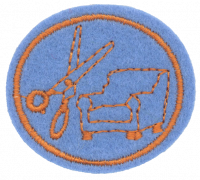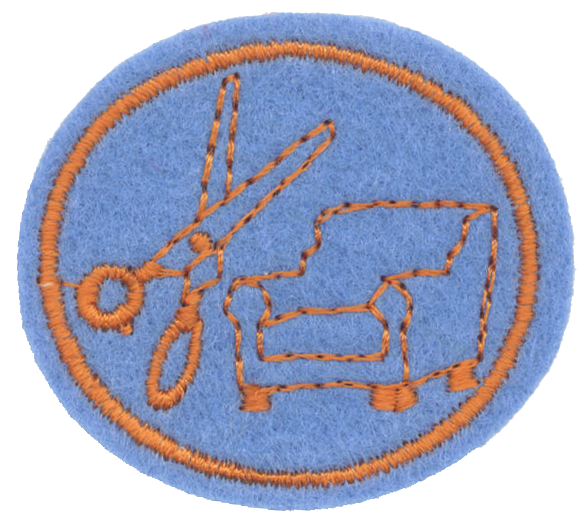Difference between revisions of "AY Honors/Upholstery/Answer Key/es"
(Created page with "{{clear}}") |
(Created page with "<noinclude>") |
||
| Line 47: | Line 47: | ||
{{CloseReq}} <!-- 1f --> | {{CloseReq}} <!-- 1f --> | ||
{{ansreq|page={{#titleparts:{{PAGENAME}}|2|1}}|num=1g}} <!--T:13--> | {{ansreq|page={{#titleparts:{{PAGENAME}}|2|1}}|num=1g}} <!--T:13--> | ||
| − | <noinclude> | + | <noinclude></noinclude> |
| − | </noinclude | ||
| − | |||
| − | |||
| − | + | {{clear}} | |
| − | |||
| − | |||
| − | + | {{clear}} | |
| − | |||
| − | |||
| − | + | <noinclude></noinclude> | |
| − | <noinclude | ||
| − | |||
{{CloseReq}} <!-- 1g --> | {{CloseReq}} <!-- 1g --> | ||
{{ansreq|page={{#titleparts:{{PAGENAME}}|2|1}}|num=1h}} <!--T:16--> | {{ansreq|page={{#titleparts:{{PAGENAME}}|2|1}}|num=1h}} <!--T:16--> | ||
| − | <noinclude> | + | <noinclude></noinclude> |
| − | </noinclude | ||
| − | |||
| − | |||
| − | |||
| − | |||
| − | |||
| − | |||
| − | + | <noinclude></noinclude> | |
| − | <noinclude | ||
| − | |||
{{CloseReq}} <!-- 1h --> | {{CloseReq}} <!-- 1h --> | ||
{{CloseReq}} <!-- 1 --> | {{CloseReq}} <!-- 1 --> | ||
| Line 86: | Line 68: | ||
</div></noinclude> | </div></noinclude> | ||
{{ansreq|page={{#titleparts:{{PAGENAME}}|2|1}}|num=2a}} | {{ansreq|page={{#titleparts:{{PAGENAME}}|2|1}}|num=2a}} | ||
| − | <noinclude> | + | <noinclude></noinclude> |
| − | </noinclude | ||
| − | |||
| − | |||
| − | + | <noinclude></noinclude> | |
| − | <noinclude | ||
| − | |||
{{CloseReq}} <!-- 2a --> | {{CloseReq}} <!-- 2a --> | ||
{{ansreq|page={{#titleparts:{{PAGENAME}}|2|1}}|num=2b}} <!--T:18--> | {{ansreq|page={{#titleparts:{{PAGENAME}}|2|1}}|num=2b}} <!--T:18--> | ||
| − | <noinclude> | + | <noinclude></noinclude> |
| − | </noinclude | ||
| − | |||
| − | |||
| − | + | <noinclude></noinclude> | |
| − | <noinclude | ||
| − | |||
{{CloseReq}} <!-- 2b --> | {{CloseReq}} <!-- 2b --> | ||
{{ansreq|page={{#titleparts:{{PAGENAME}}|2|1}}|num=2c}} <!--T:19--> | {{ansreq|page={{#titleparts:{{PAGENAME}}|2|1}}|num=2c}} <!--T:19--> | ||
| − | <noinclude> | + | <noinclude></noinclude> |
| − | </noinclude | ||
| − | |||
| − | |||
| − | + | <noinclude></noinclude> | |
| − | <noinclude | ||
| − | |||
{{CloseReq}} <!-- 2c --> | {{CloseReq}} <!-- 2c --> | ||
{{ansreq|page={{#titleparts:{{PAGENAME}}|2|1}}|num=2d}} <!--T:20--> | {{ansreq|page={{#titleparts:{{PAGENAME}}|2|1}}|num=2d}} <!--T:20--> | ||
| − | <noinclude> | + | <noinclude></noinclude> |
| − | </noinclude | ||
| − | |||
| − | |||
| − | + | <noinclude></noinclude> | |
| − | <noinclude | ||
| − | |||
{{CloseReq}} <!-- 2d --> | {{CloseReq}} <!-- 2d --> | ||
{{ansreq|page={{#titleparts:{{PAGENAME}}|2|1}}|num=2e}} <!--T:21--> | {{ansreq|page={{#titleparts:{{PAGENAME}}|2|1}}|num=2e}} <!--T:21--> | ||
| − | <noinclude> | + | <noinclude></noinclude> |
| − | </noinclude | ||
| − | |||
| − | |||
| − | + | <noinclude></noinclude> | |
| − | <noinclude | ||
| − | |||
{{CloseReq}} <!-- 2e --> | {{CloseReq}} <!-- 2e --> | ||
{{ansreq|page={{#titleparts:{{PAGENAME}}|2|1}}|num=2f}} <!--T:22--> | {{ansreq|page={{#titleparts:{{PAGENAME}}|2|1}}|num=2f}} <!--T:22--> | ||
| − | <noinclude> | + | <noinclude></noinclude> |
| − | </noinclude | ||
| − | |||
| − | + | {{clear}} | |
| − | |||
| − | |||
| − | + | {{clear}} | |
| − | |||
| − | |||
| − | + | {{clear}} | |
| − | |||
| − | |||
| − | |||
| − | |||
| − | |||
| − | |||
| − | + | {{clear}} | |
| − | |||
| − | |||
| − | |||
| − | |||
| − | + | {{clear}} | |
| − | |||
| − | |||
| − | |||
| − | + | <noinclude></noinclude> | |
| − | <noinclude | ||
| − | |||
{{CloseReq}} <!-- 2f --> | {{CloseReq}} <!-- 2f --> | ||
{{ansreq|page={{#titleparts:{{PAGENAME}}|2|1}}|num=2g}} | {{ansreq|page={{#titleparts:{{PAGENAME}}|2|1}}|num=2g}} | ||
| − | <noinclude> | + | <noinclude></noinclude> |
| − | </noinclude | ||
| − | |||
| − | |||
| − | + | {{clear}} | |
| − | |||
| − | |||
| − | + | <noinclude></noinclude> | |
| − | <noinclude | ||
| − | |||
{{CloseReq}} <!-- 2g --> | {{CloseReq}} <!-- 2g --> | ||
{{ansreq|page={{#titleparts:{{PAGENAME}}|2|1}}|num=2h}} <!--T:24--> | {{ansreq|page={{#titleparts:{{PAGENAME}}|2|1}}|num=2h}} <!--T:24--> | ||
| − | <noinclude> | + | <noinclude></noinclude> |
| − | </noinclude | ||
| − | |||
| − | |||
| − | + | <noinclude></noinclude> | |
| − | <noinclude | ||
| − | |||
{{CloseReq}} <!-- 2h --> | {{CloseReq}} <!-- 2h --> | ||
{{ansreq|page={{#titleparts:{{PAGENAME}}|2|1}}|num=2i}} | {{ansreq|page={{#titleparts:{{PAGENAME}}|2|1}}|num=2i}} | ||
Revision as of 00:20, 4 May 2021
Nivel de destreza
2
Año
Desconocido
Version
06.12.2025
Autoridad de aprobación
Asociación General
1
1a
1b
1c
1d
1e
1f
1g
1h
2
2a
2b
2c
2d
2e
2f
2g
2h
2i
2j
3
- Any of the fibres listed above
- leather
4
5
6
7
7a
7b
These are very similar projects. The point is to build a box of a reasonable size. Either project is going to involve surrounding your wooden box with fabric and creating a proper top. We suggest looking on youtube for techniques if you do not have a qualified instructer.
8
Upholstered wall panelling can be an attractive additon to your decor and a functional piece of art. Fabric panels offer acoustic benefits as they absorb sound and tend to soften the look of the room. The use of different shapes, and the wide variety of fabric colours and textures available give unlimited possible combinations.
A feature panel can be purely decretive art or practical such as a pin board or headboard for a bed. A large example might cover an entire wall.
To create a feature panel you will need a plywood back, some foam (usually), and one or more fabrics. You may want to sew designs into the fabric or piece (quilt) pieces together. Attach the fabric and foam to the board around the back with staples and from the front with decorative tacks. This is a chance to be creative and have fun. It does not matter exactly what design you build, as long as the workmanship is good.
References
- Upholstery: A Complete Course : Chairs, Sofas, Ottomans, Screens and Stools By David James, published by Sterling Publishing Company, Inc., 1999; ISBN 1861081189, 9781861081186
- Furniture Upholstery for Schools is a book published in 1919. It is now in the public domain.


